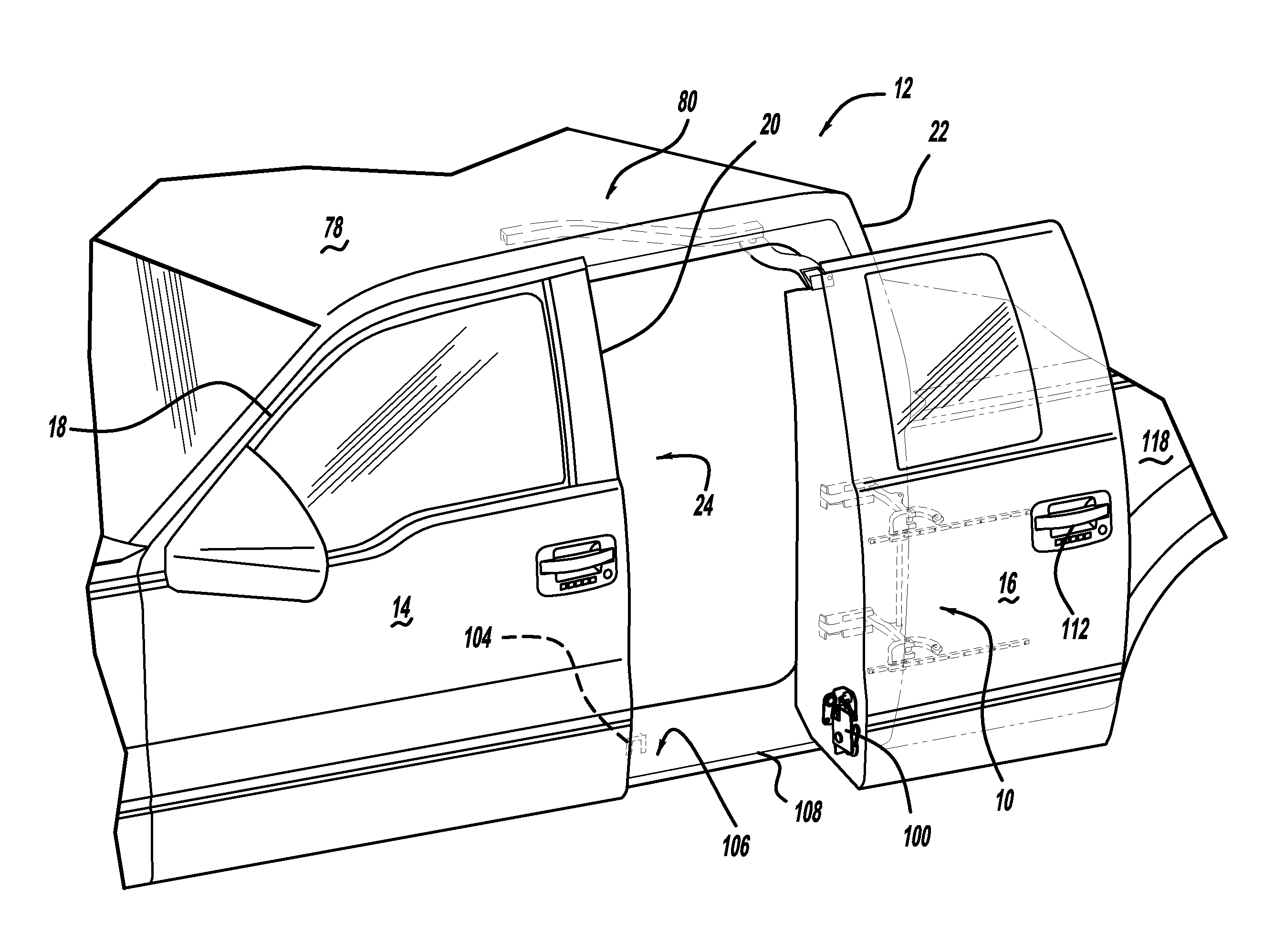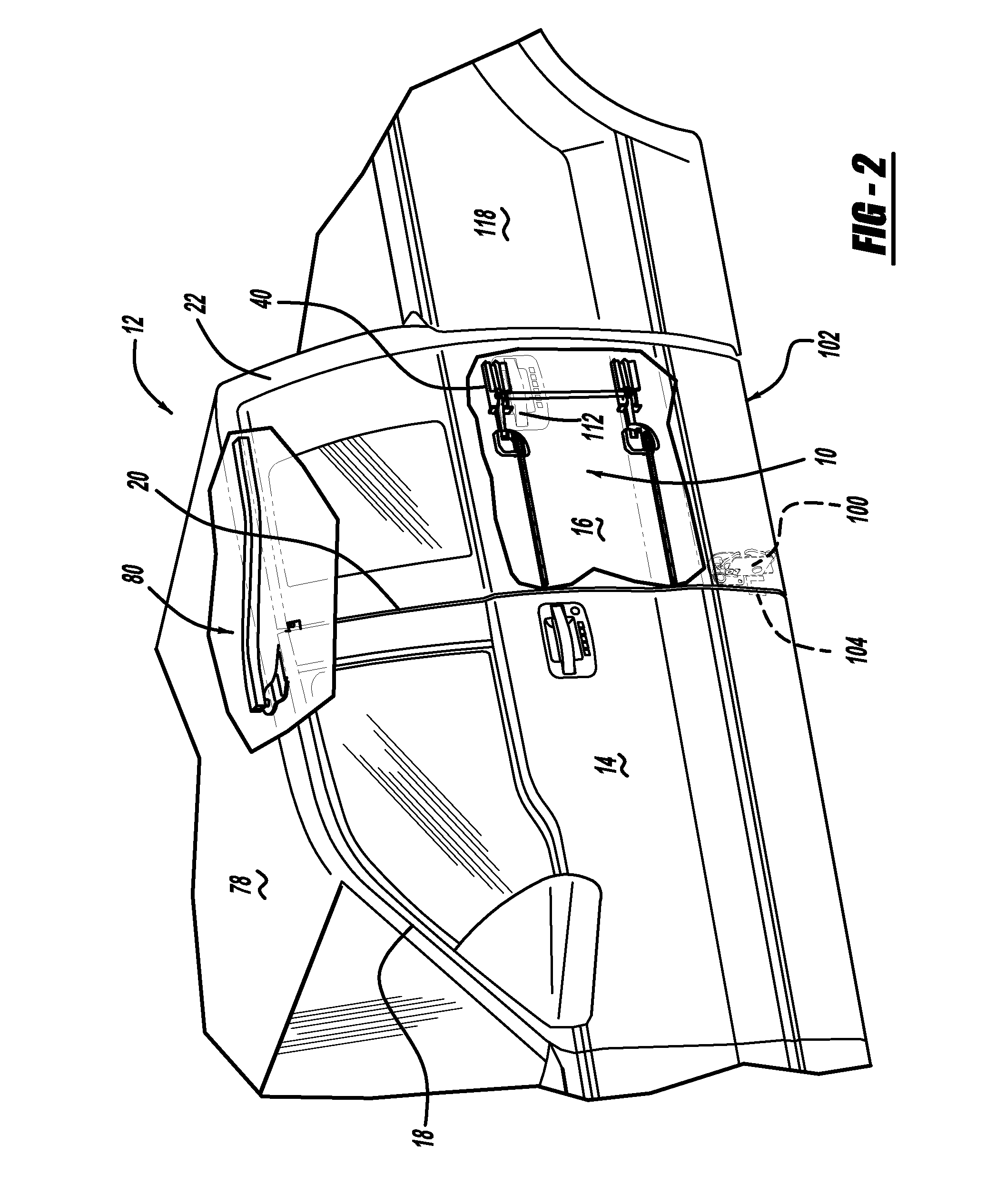Vehicle dual hinge rear door articulating and sliding system
a rear door and hinge technology, applied in the direction of doors, roofs, transportation items, etc., can solve the problems of affecting the safety of passengers, so as to prevent the sliding movement of the vehicle door and the effect of preventing the sliding movement of the compartment closur
- Summary
- Abstract
- Description
- Claims
- Application Information
AI Technical Summary
Benefits of technology
Problems solved by technology
Method used
Image
Examples
Embodiment Construction
[0037]Referring now to the drawings wherein like reference numerals designate corresponding parts throughout the several views, FIGS. 1-16B illustrate a mechanism for vehicle rear door articulation and sliding according to the present invention, generally designated “rear door articulating and sliding mechanism 10.”
[0038]Referring to FIGS. 1-3, rear door articulating and sliding mechanism 10 may generally be mounted onto a vehicle 12 including front and rear doors 14, 16. In the exemplary embodiment illustrated, vehicle 12 may be a pickup truck including A, B and C pillars 18, 20, 22. As shown in FIGS. 4 and 5, and described in greater detail below, in order to facilitate ingress and egress into and from compartment 24 of vehicle 12, rear door articulating and sliding mechanism 10 may allow for complete opening of rear door 16, with front door 14 being fully opened or closed.
[0039]The various sub-components of rear door articulating and sliding mechanism 10 will now be described in ...
PUM
 Login to View More
Login to View More Abstract
Description
Claims
Application Information
 Login to View More
Login to View More - R&D
- Intellectual Property
- Life Sciences
- Materials
- Tech Scout
- Unparalleled Data Quality
- Higher Quality Content
- 60% Fewer Hallucinations
Browse by: Latest US Patents, China's latest patents, Technical Efficacy Thesaurus, Application Domain, Technology Topic, Popular Technical Reports.
© 2025 PatSnap. All rights reserved.Legal|Privacy policy|Modern Slavery Act Transparency Statement|Sitemap|About US| Contact US: help@patsnap.com



